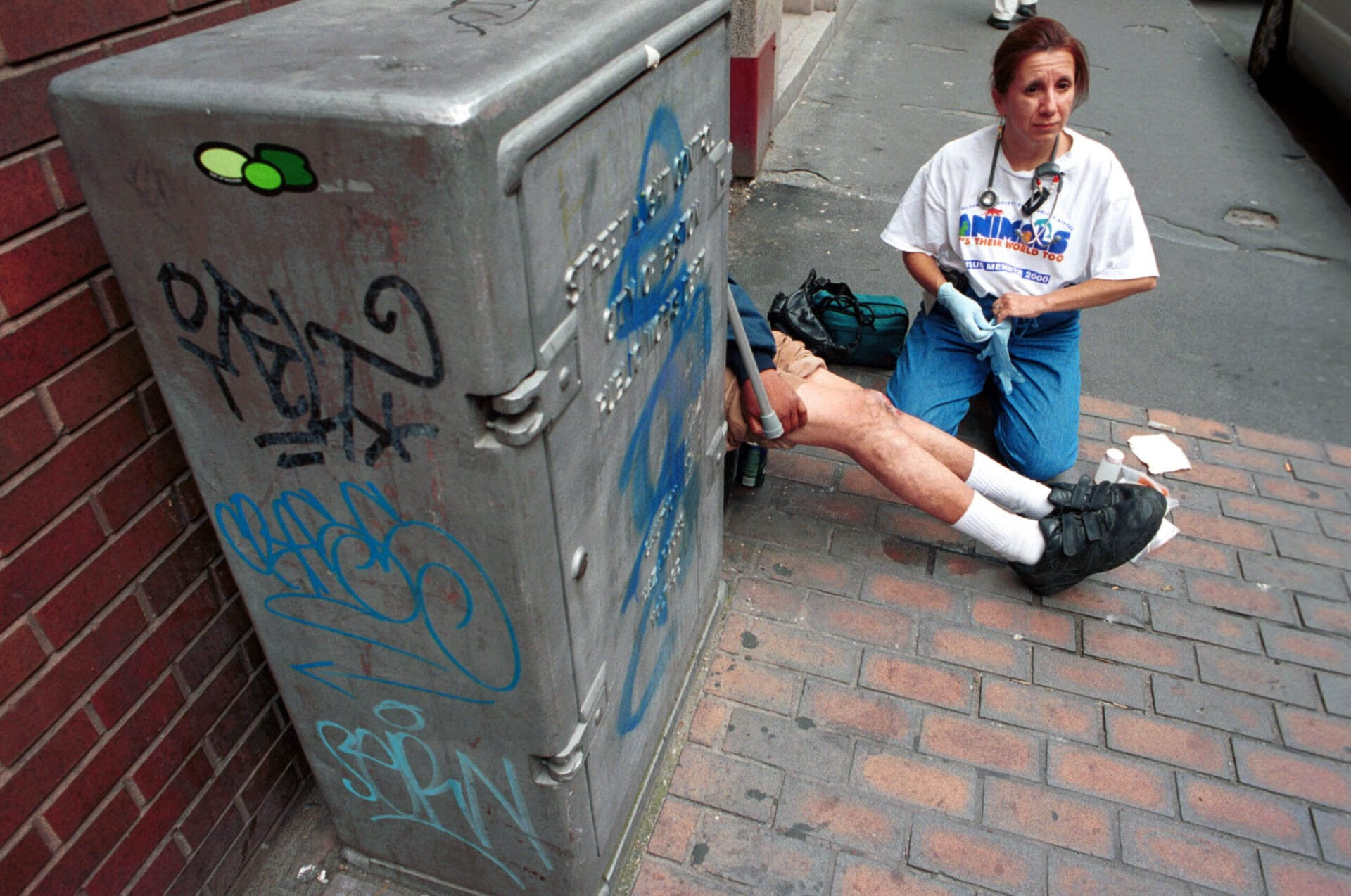Street homelessness represents a particularly vulnerable segment within the broader homeless population. These individuals often seek refuge in places unseen and underserved by traditional systems – deserted parks, hidden doorways, bustling train terminals, and the shadowed spaces beneath bridges. Many within this group feel excluded or unwelcome in conventional homeless shelters, leading to a deeper disconnect from available support structures. Consequently, the medical and social needs of this specific population are exceptionally critical. Often feeling marginalized by standard medical facilities, with their formal waiting rooms and clinic settings, these individuals may have forgone medical treatment for extended periods, despite frequently facing complex and urgent health issues. This critical gap in care is the very foundation upon which the concept of street medicine and the invaluable service of street doctors were established.
The Boston Genesis of Street Medicine
Jim O’Connell, MD, a pioneer in the field and co-founder and president of the Boston Health Care for the Homeless Program, along with his faculty position at Boston University Chobanian & Avedisian School of Medicine, embodies the dedication of a street doctor, serving the Boston community for nearly four decades. While the practice of a street doctor can manifest in various forms, Dr. O’Connell emphasizes a core, unifying principle.
“At its essence, a street doctor is a physician, nurse practitioner, or physician assistant committed to proactively reaching out to individuals on the streets, delivering care directly to them rather than waiting for them to seek us out,” O’Connell explains. This proactive approach distinguishes street doctors from clinicians based in shelters, whose work he categorizes as “homeless health care medicine.” Street doctors, in contrast, venture beyond the confines of buildings, utilizing foot patrols, bicycles, or mobile vans to connect with patients in their actual living environments – the streets themselves.
“At its essence, a street doctor is a physician, nurse practitioner, or physician assistant committed to proactively reaching out to individuals on the streets, delivering care directly to them rather than waiting for them to seek us out.”
“Homelessness is visibly present in our society, yet the personal lives and narratives of those experiencing it often remain hidden from broader understanding,” O’Connell notes. “We have tragically learned that the mortality rates for individuals living on the streets of Boston are alarmingly high, 10 to 12 times greater than those of housed individuals of the same age.”
 Street Doctor Outreach: A healthcare worker from Boston Health Care for the Homeless Program assists a patient experiencing homelessness, highlighting the critical role of street medicine in reaching vulnerable populations.
Street Doctor Outreach: A healthcare worker from Boston Health Care for the Homeless Program assists a patient experiencing homelessness, highlighting the critical role of street medicine in reaching vulnerable populations.
Boston’s pioneering steps in street medicine began during the harsh winters of 1985 and 1986. O’Connell and his colleagues recognized a disturbing trend: the majority of fatalities among the homeless population occurred among those who remained outdoors, avoiding shelters. This crisis coincided with a severe tuberculosis outbreak, a disease requiring a strict and consistent medication regimen, demanding daily adherence from patients. Understanding the significant barriers homeless individuals faced in simply accessing clinics, O’Connell, along with fellow clinicians and staff from the Pine Street Inn and the former Boston City Hospital (now part of Boston Medical Center), took to the streets. They used bicycles and walked extensively throughout Boston, seeking out patients to administer crucial medications directly. This mobile, person-centered approach became a defining characteristic of street doctor initiatives.
The Expanding Landscape of Street Medicine and its Future
Dr. O’Connell emphasizes that the pillars of effective street medicine are consistency, uninterrupted care, and mutual respect. He recounts an early learning experience from the nascent days of the Pine Street Inn van outreach. Initially, he and another street doctor would conduct nighttime check-ins on individuals living outdoors using a medical van, primarily to ensure their well-being. However, they soon realized this initial approach was not truly meeting the needs of the people they aimed to serve.
“One outspoken patient challenged our methods, asking, ‘How would you feel if your doctor unexpectedly showed up in your bedroom in the middle of the night, shining a bright flashlight in your face?’” This feedback was pivotal. The team adapted their strategy. They continued using the van for outreach, but shifted their initial interaction. Instead of leading with a flashlight and medical questions, they began by offering sandwiches, coffee, soup, blankets, and a friendly, welcoming presence. Crucially, as requested, they redirected the flashlight to shine on themselves, fostering trust and demonstrating respect.
“Living on the streets inherently creates vulnerability, even in a city like ours, surrounded by world-renowned medical institutions.”
While the Boston street doctor program stands as one of the nation’s oldest and most structured, programs across the country vary significantly in their organization and resources. Not all benefit from the same level of established infrastructure, deep-rooted collaborations with local shelters like the Pine Street Inn, and consistent city and state government support. Many street medicine initiatives are more informal or rely heavily on volunteer efforts. However, O’Connell specifically highlights Pittsburgh as another city with a robust street doctor presence, guided by the pioneering work of Jim Withers. Dr. Withers, like O’Connell, has dedicated his career to bringing healthcare directly to the streets. The street medicine program he founded, Operation Safety Net, has operated for approximately three decades, mirroring BHCHP’s commitment to providing essential on-the-ground care to unsheltered individuals experiencing homelessness. These examples illustrate the growing recognition and diverse approaches to delivering critical healthcare services directly to those living on the streets, ensuring that medical attention reaches even the most marginalized members of our communities.
